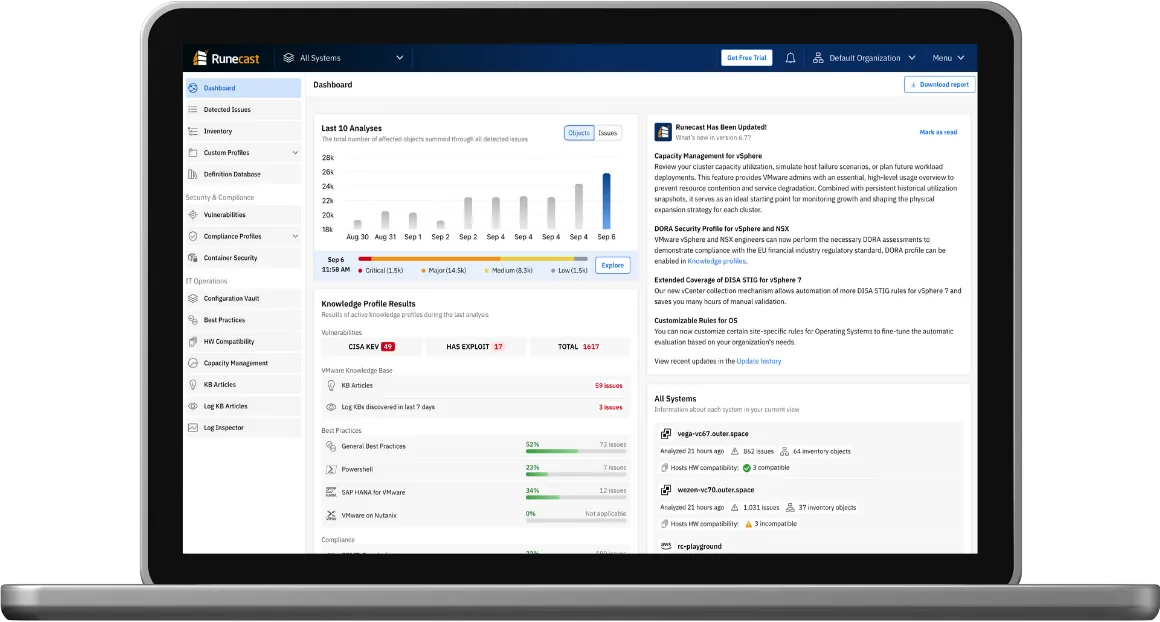Runecast provides you an easy and fast view if you have vulnerabilities, where they are and how to fix them.It is easy to get information about compliance.At the moment, there is no other tool, that provides this kind of information that are always up to date and easy to understand.

Enterprise, 1000+ emp.












































